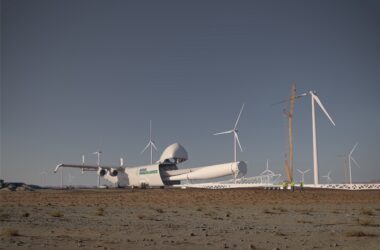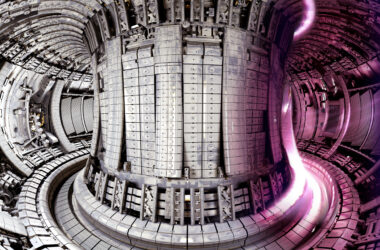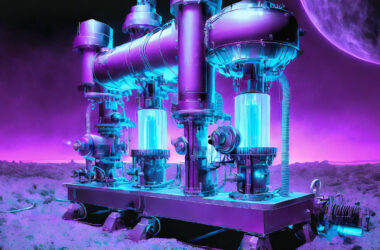
Innovative solutions are critical in an era where sustainability and renewable energy are at the forefront of global discussions. This week, a new groundbreaking initiative came from Jaguar Land Rover (JLR).

Recognising the potential of repurposed electric vehicle batteries, JLR has embarked on a mission to breathe a second life into used Jaguar I-Pace batteries. The electric vehicle (EV) revolution has brought a surge in battery production. However, the question of what happens to these batteries once they’ve outlived their vehicular purpose has often been a point of contention.
JLR proposes repurposing the I-Pace batteries. The company is addressing electronic waste and creating one of the UK’s most substantial renewable energy storage systems.
The Partnership with Wykes Engineering
In a strategic move to maximise the potential of used I-Pace batteries, Jaguar Land Rover joined forces with British firm Wykes Engineering, a renowned name in renewable energy products. This collaboration aims to harness the power of solar and wind energy, storing it efficiently in the repurposed batteries of the I-Pace.
The synergy between JLR and Wykes Engineering has led to the conceptualising and developing the Battery Energy Storage System (BESS). This system could be one of the largest energy storage systems in the UK. Integrating the I-Pace’s second-life batteries, the BESS alleviates pressure on the National Grid, especially during peak electricity demand periods. Such systems are crucial in an age where the popularity of electric vehicles is surging, leading to increased demands on the power grid.
One of the standout features of the BESS is its ability to manage rapid spikes in electricity demand. Collecting and storing solar and wind energy ensures no renewable energy goes to waste, even when the grid is at total capacity. This not only promotes efficient energy use but also aids in reducing the carbon footprint.
BESS has been designed to integrate I-Pace batteries directly. Once part of prototype and test vehicles, these batteries are seamlessly slotted into racks within the system’s containers. Such a design maximises the project’s sustainability and underscores the potential of repurposing in renewable energy.
Each BESS unit incorporates 30 batteries sourced from Jaguar prototypes and test vehicles. When combined, these batteries boast a staggering system capacity of 2.5 MWh. To put this into perspective, this energy storage capacity is sufficient to power 750 households for an entire day. Such a feat is a testament to the latent potential of used EV batteries and their role in the future of energy.
A unique aspect of the BESS is its inverter system. Each BESS unit has its inverter, allowing it to feed electricity directly into the National Grid during peak demand. Conversely, during off-peak periods, the system can draw electricity from the grid, storing it for future use. This bidirectional flow ensures optimal energy utilisation, catering to the grid’s demands while preparing for future peak loads.
The I-Pace batteries are directly slotted into racks within the BESS containers, eliminating the need for additional manufacturing steps or module removal. This direct integration not only streamlines the repurposing process but also enhances the project’s overall sustainability.
We featured engineer Orla Murphy and her work at Jaguar Land Rover in our 2018 Born to Engineer film. Earlier this year we took some time out with Orla to discuss her route into Engineering.
.
Growing up in rural Ireland, Orla Murphy remembers how exciting it felt when her family’s tractor was upgraded to include a fitted radio. As an engineer with Jaguar Land Rover, she’s working on ways to ensure that the software that drives every function of modern vehicles can be downloaded remotely wherever they are in the world.
Find out more about the different career paths you might take in our “The Different Types Of Engineering (And Their Career Paths) Explained” Guide.
Environmental Impact
The push towards renewable energy sources, such as solar and wind, is crucial in the fight against climate change. However, the intermittent nature of these sources necessitates efficient storage solutions. The BESS, powered by second-life batteries, offers a sustainable answer.
By harnessing and storing renewable energy, the system ensures minimal wastage, making the most of every ray of sunlight and gust of wind. Furthermore, by repurposing used batteries, JLR is actively reducing electronic waste.
According to a study by McKinsey & Company, by 2030, the supply of second-life batteries for stationary applications could exceed 200 gigawatt-hours annually, translating to a global value of over $30 billion.
By tapping into the residual 70-80% capacity of used EV batteries, they’re promoting sustainability and unlocking significant economic potential.
JLR’s initiative is part of a global trend where significant automakers explore ways to repurpose old batteries. From Groupe Renault to Audi, industry giants recognise the potential of used EV batteries in energy storage systems. As more electric vehicles hit the roads and eventually reach their end-of-life, the availability of second-life batteries will surge, offering ample opportunities for innovative energy storage solutions.
Long term JLR has plans to integrate batteries from more I-Pace production vehicles as they reach their end-of-life. This means that the energy storage capacity of the BESS will grow, further supporting the National Grid and promoting renewable energy utilisation. By the end of 2023, they aim to supply batteries that can store a total of 7.5 MWh of energy, a capacity that can power 750 homes for a day.
The company has announced plans to relaunch Jaguar as an all-electric brand by 2025. This move will accompany the debut of next-generation electric vehicles, showcasing JLR’s commitment to electrification. By 2030, other iconic lines, such as the Range Rover, Discovery, and Defender, will also feature pure electric models.
The company has said it is open to further collaborations, aiming to develop a comprehensive EV ecosystem encompassing everything from batteries to charging solutions.
The journey of the Jaguar I-Pace batteries, from powering luxury vehicles to becoming cornerstones of renewable energy storage, is emblematic of the transformative power of innovation. In a world grappling with the dual challenges of climate change and energy consumption, initiatives like the Battery Energy Storage System (BESS) offer a potential roadmap for the future.
TLDR:
- Jaguar Land Rover (JLR) is repurposing used I-Pace batteries to support renewable energy storage.
- In collaboration with Wykes Engineering, JLR has developed the Battery Energy Storage System (BESS) to harness solar and wind power.
- The BESS, one of the UK’s largest energy storage systems, supports the National Grid, especially during peak electricity demand periods.
- This initiative promotes a circular economy, reducing electronic waste and maximising the lifecycle of EV batteries.
- By 2023, JLR aims to supply batteries that can store 7.5 MWh of energy, enough to power 750 homes daily.
- JLR’s broader vision includes relaunching Jaguar as an all-electric brand by 2025 and further collaborations to develop a comprehensive EV ecosystem.








